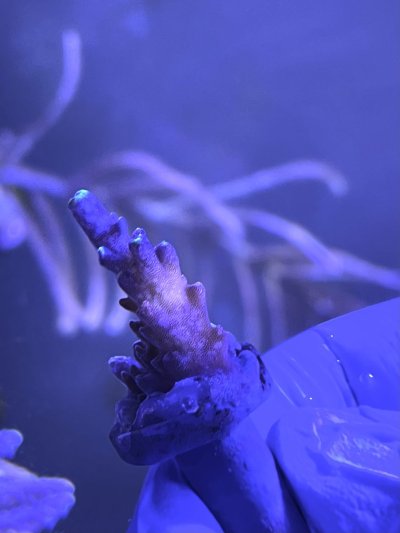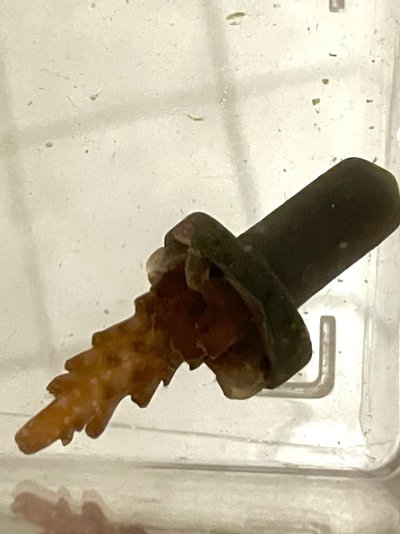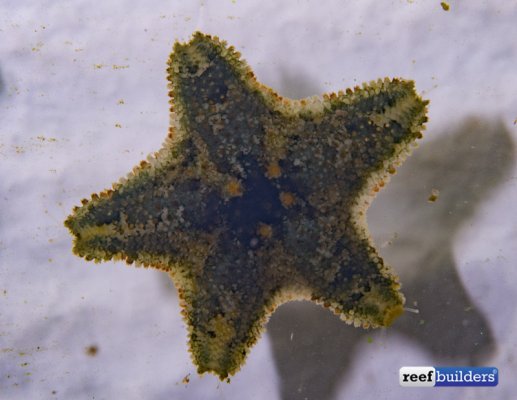- Joined
- Jun 15, 2020
- Messages
- 51
- Reaction score
- 17
About 1 month ago, I noticed that a colony of Ponape Rainbow that I had been nursing back to health due to a shipping issue and a JF Fox Flame, both next to each other on the frag rack, looked to be in poor condition. The Ponape Rainbow had lost a lot of tissue around the base following 3.5 days in a shipping bag but the color had returned and the polyps were out. New growth was seen filling in the tips which had come in burnt and were previously bitten by a Flame Angel that I rehomed. However, there was still exposed white skeleton at the base of the coral which looked to have progressed a bit on one branch of the frag. The Fox Flame had clear bite marks (seen in images below). For the previous 7-10 days there had been a black/white mottled asterina-sized starfish which I believe came in on some Caribbean live rock and eventually hitched its way from my refugium when I moved some rocks between the tanks. I turkey basted both corals but observed no flatworms. I removed both frags, the starfish went into the trash, and I placed the frags into the refugium away from any other SPS for observation. I placed them in the refugium December 15th. Both corals have grown in the refugium and look to be healthy again with no signs of any bite marks. Any basting I have done on them or my other colonies has never returned any flatworms, and even dips and other rinses in a specimen container of the frags did not return any culprits. I have no proof of AEFW, only the bite marks on the Fox Flame and the recession around the base of the Ponape Rainbow as reason for suspicion. Could this be a starfish eating on my acropora or is it AEFW and I haven't been able to find one yet by sheer bad luck?
For reference, my GC Acroberry, BC no namer, Green Slimer, Sunset Milli, other frags of the Ponape Rainbow, and Cali Tort in the same aquarium have all grown and shown no issues. All my other SPS have had no issues either.
(Image of similarly appearing starfish from the internet attached)



For reference, my GC Acroberry, BC no namer, Green Slimer, Sunset Milli, other frags of the Ponape Rainbow, and Cali Tort in the same aquarium have all grown and shown no issues. All my other SPS have had no issues either.
(Image of similarly appearing starfish from the internet attached)

















